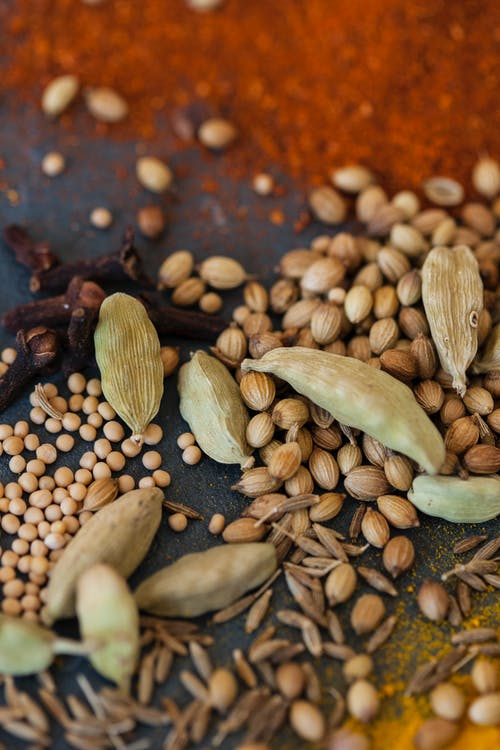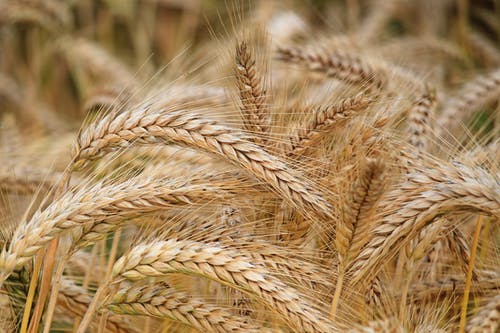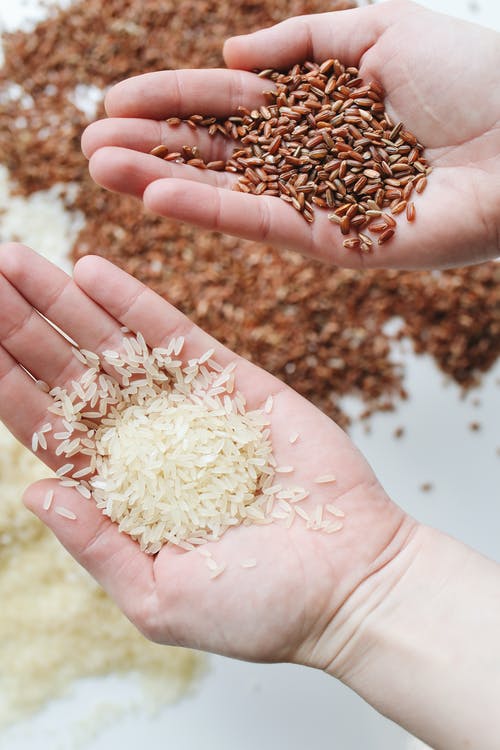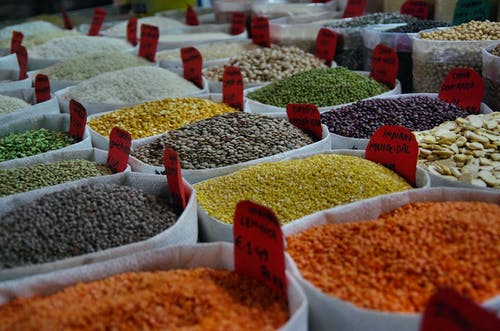According to Charak Samhita, there are 8 limbs of an ideal Ayurvedic diet. These limbs are the critical multi-dimensional factors that make a meal complete and healthy. Get the Ayurveda Experience by understanding these eight vital factors that constitute an ideal Ayurveda diet –
Ayurveda says that digestion is the very core of our metabolism.
1. Prakrati

This factor signifies the nature of the food item and the way it relates to the body type of the consumer. For example- green cardamom is naturally cooling in nature and therefore, it is an excellent herb for a pitta (ayurvedic body types pitta) prakrati person.
A person who consumes the food that agrees with the body can extract the best benefits from that food.
2. Karan
This factor indicates the type of food preparation that suits the body type of the person. This factor keeps changing according to the season, weather conditions, body type, and multiple other factors. For example – fried delicacies of gram flour (besan) are best suited for the rainy season. However, roasted gram flour (sattu) mixed with sugar and water is a cooling traditional recipe for summers.

There are countless ways in which an ingredient can be prepared, depending on changing factors like health conditions, seasons, etc. Preventive Ayurveda offers excellent methods for healthy cooking in all health conditions.
3. Sanyog – combining foods for good digestion
This factor means the combination of different food items and their effect on the body. It’s very important to understand what Ayurveda recommend for pitta kapha diet. According to Ayurveda, there are two types of food combination The right combination (Satmya Ahaar) happens when two food items come together to produce a synergistic effect. For example, Ayurveda says that green cardamom helps to increase the digestion and bioavailability of banana.

The wrong combination (Virrudha Ahaar) happens when two incompatible food combinations come together to produce a toxic effect on the body. For example, acid and milk have different modes of digestion. Ayurveda says that when they are mixed and consumed, then they tend to produce a toxic effect on the body.
It is very important to understand food combining for better digestion if you have pitta dosha, pitta imbalance or looking for tridoshic foods.
4. Rashi
This factor denotes the amount of food consumed. There are multiple branches to this factor. For example, it may signify the amount of solid, fluid, and gas that should be in the stomach to ensure proper digestion.

– food combinations for digestion
Another example suggests the amount of grains that a person should consume in a day. Ayurveda says that a person should consume the amount of grains that fill up his/her palms joined together. And this amount varies according to the size of the palms, therefore it is never equal but appropriate for the individual.
There are multiple other ways and parameters to ensure the correct amount of nutrients that a person needs and it keeps changing according to individual health conditions.
According to Ayurveda, you should consume one-third each of solid food, fluids and allow one-third part of the stomach to be filled with gas for easy movement.
5. Desh
This factor signifies the native place or current habitat of the person. The habitat of the person governs multiple important dietary influencers like climate, availability of fruits, vegetables, grains, etc., cooking style, culture, and so on. Therefore, desh (country) is a fairly important factor.

For example, quinoa is a super-food but it is great for the native population of Peru and Brazil, where it grows naturally because the native vegetation and local population are in sync with a similar climatic cycle. That’s why Ayurveda says that native food is the best.
In fact, Ayurveda completely prohibits the use of genetically modified, inorganically grown food. It says that any food that grows in unnatural conditions should never be used for human consumption.
6. Kaal
This factor indicates the time, it may be the time of consumption or the time taken to digest the food, seasonal changes, Annual cycles, biorhythm of the body, etc. In this way, kaal also has numerous subdivisions.

For example, Ayurveda prohibits eating yogurt at night because it is heavy to digest and can burden the digestive system at night.
Another example relates to the seasonal dimension of time. Ayurveda says that you should not have sattu (roasted grain flour) in the winter as it is very light and has a cooling effect on the body, but it is a great food for the summers for the same reasons!
7. Upyog Sanstha
This is the factor that defines the rule of consumption for a food item is a specific condition. It constitutes a complete set of rules for a specific condition. Upyog sanstha varies according to the changing season, health condition, age, digestive power, etc. It is an important component of an Ideal Ayurvedic meal. However, it is critical especially in the case of digestive disorders like IBS.

One of the most basic rules of upyog sanstha, applicable to both the healthy and the sick, is that one should never eat before the digestion of the previous meal is complete.
Eating without proper digestion of the previous meal is called adhiyaashana (mid-meal eating). It is the most crucial reason for toxin accumulation in the body.
8. Upyokta
This is one of the most important factors that indicate the current health condition of the consumer. And it is more important than the body constitution or the prakrati because each person is unique and may have a completely different response to a food substance. This is the factor that has multiple subtle indications, for example – personal likes and dislikes of a person, allergic responses, etc. All these factors are unique in the case of every individual and they are more important than the body type or any other factor.

For example, a person has pitta prakrati (pitta body type) but hates the taste of green cardamom or the aroma of sandalwood, then these herbs do not apply to him, because they are not the best fir in his case. Besides, Ayurveda recommends that medicine should never cause disgust, fear, anxiety. Trauma or anger in the patient. Therefore, upyokta or the consumer is the biggest factor in an Ideal Ayurvedic diet.
In a way, it means that you should eat (healthy) food that you like. Avoid eating something just for the sake of health when you hate its taste or looks.
A peaceful and receptive mind is the key to the best digestion and absorption!
I hope that this article helps everyone to achieve flawless health! and if you are still not clear then to get the Ayurveda experience find some ayurvedic doctor.

